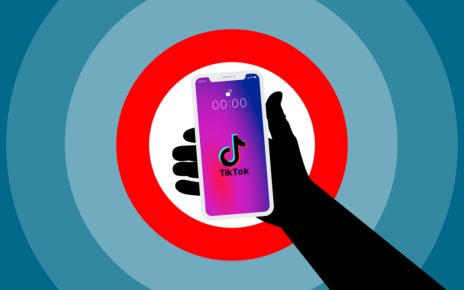A logo is the face of a brand, serving as a visual representation of its values, personality, and purpose. A well-designed logo can leave a lasting impression on customers and help build brand recognition and loyalty. Whether you are a business owner, a designer, or just someone interested in the art of logo design, this guide will walk you through the essential elements and principles of creating a timeless and memorable logo.
1. Understand the Brand Identity:
Before you start designing, it is crucial to have a deep understanding of the brand’s identity, values, and target audience. The logo should align with the brand’s mission and reflect its personality. Conducting research on the industry, competitors, and market trends can provide valuable insights to inspire your design.
2. Keep it Simple:
Simplicity is key when it comes to logo design. A simple logo is more likely to be remembered and recognized. Avoid cluttering the design with too many elements or intricate details. Aim for a clean and clear design that conveys the brand’s message effectively.
3. Versatility Matters:
A successful logo design is versatile and works well across various platforms and mediums. It should look equally good in color and black-and-white, in different sizes, and on different backgrounds. Test your logo across different applications to ensure its adaptability.
4. Originality and Uniqueness:
Aim for a logo that stands out from the crowd and is unique to the brand. Avoid using stock icons or clichéd symbols that have been overused in the industry. Create something original that sets the brand apart and makes it memorable.
5. Choose the Right Colors:
Colors evoke emotions and play a significant role in brand perception. Understand the psychology of colors and choose a color palette that resonates with the brand’s values and message. Consider how the colors will look together and the emotions they may evoke in the target audience.
6. Typography Matters:
Typography is a crucial aspect of logo design. The font you choose should match the brand’s personality. Avoid overly decorative or complex fonts that may be challenging to read at smaller sizes. Opt for a clean and legible typeface that complements the overall design.
7. Scalability and Proportion:
A logo should be scalable without losing its clarity and visual impact. Ensure that all elements are proportionally balanced, even when the logo is resized to fit different applications, from business cards to billboards.
8. Timelessness and Longevity:
Aim to create a logo that will stand the test of time. Avoid trendy elements that might quickly become outdated. The best logos are timeless and remain relevant even as design trends come and go.
9. Balance and Symmetry:
A balanced and symmetrical logo is visually pleasing and makes a stronger impression. Achieving balance in a logo design involves distributing visual weight evenly and using symmetrical elements to create a harmonious composition.
10. Seek Feedback:
After creating a logo, seek feedback from a diverse set of individuals, including stakeholders, potential customers, and fellow designers. Listen to constructive criticism and be willing to make necessary adjustments to improve the design.
11. Negative Space Utilization:
Incorporating negative space cleverly can elevate your logo design to new heights. Negative space is the empty space around and between the main design elements. It can be used to create hidden or secondary meanings within the logo, adding depth and intrigue to the overall concept. This technique not only showcases your creativity as a designer but also engages viewers, encouraging them to spend more time with the logo, trying to decipher its hidden message.
12. Cultural Sensitivity:
When designing a logo for a global audience or a brand with a diverse target market, cultural sensitivity is of utmost importance. Symbols, colors, or shapes that may have positive connotations in one culture can carry negative meanings in another. Conduct thorough research on cultural symbolism and significance to avoid unintentional misinterpretations that could harm the brand’s reputation.
13. Test in Different Contexts:
To ensure the logo performs well in real-world scenarios, test it across various contexts. Place the logo on different marketing materials, merchandise, websites, and social media platforms. Consider how it interacts with different content, backgrounds, and layouts. This step helps identify any design flaws and ensures the logo remains impactful and consistent across different touchpoints.
14. Keep it Timeless, Not Trendy:
While it’s essential to create a contemporary logo, avoid falling into the trap of incorporating fleeting design trends. Trendy logos can quickly become outdated, making a brand look out-of-touch. Instead, focus on timeless design elements that will withstand the test of time and remain relevant for years to come.
15. Iteration and Refinement:
Designing an exceptional logo rarely happens in a single attempt. Be prepared for multiple iterations and refinements. Experiment with various ideas and concepts, and don’t be afraid to start over if necessary. The process of iteration and refinement is crucial to reaching the best possible outcome.
If you lack design skills or the project demands high-quality output, consider hiring a professional logo designer. Experienced designers have the expertise to create compelling, unique, and memorable logos that resonate with the brand’s essence and objectives.
With these additional tips, you are well-equipped to embark on your logo design journey. Remember that logo design is a rewarding process that allows you to infuse creativity, strategy, and purpose into a single visual element, setting the stage for a brand’s identity and success. Need a logo? Look no further! Create one easily with the Turbologo generator.
Conclusion:
Designing a logo is a challenging but rewarding endeavor. By understanding the brand’s identity, keeping the design simple and versatile, emphasizing originality and uniqueness, choosing the right colors and typography, considering scalability and proportion, aiming for timelessness, and seeking feedback, you can create a logo that leaves a lasting impression and becomes an integral part of the brand’s identity. Remember that a well-crafted logo can contribute significantly to a brand’s success and recognition in the competitive marketplace.



